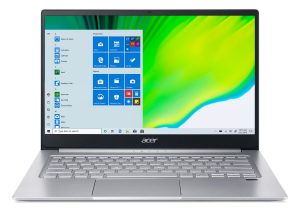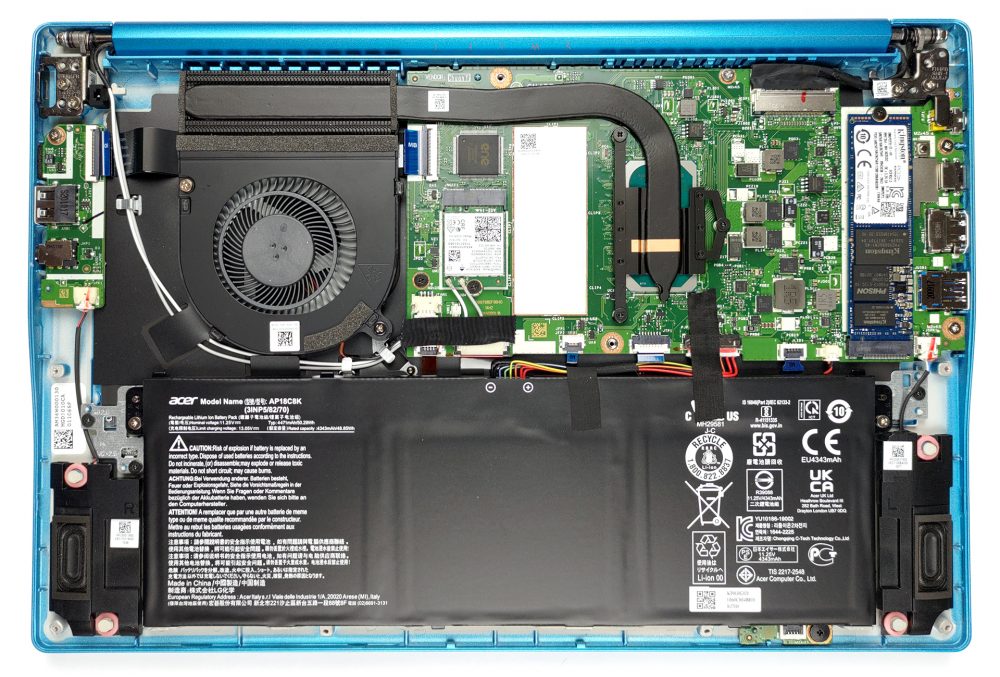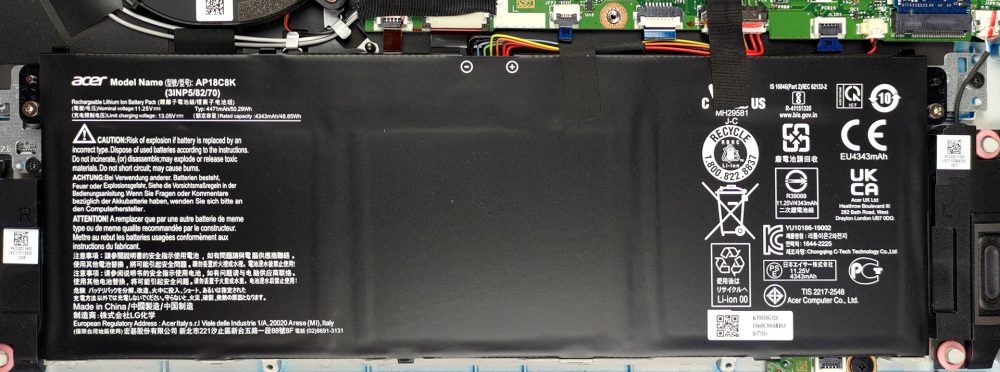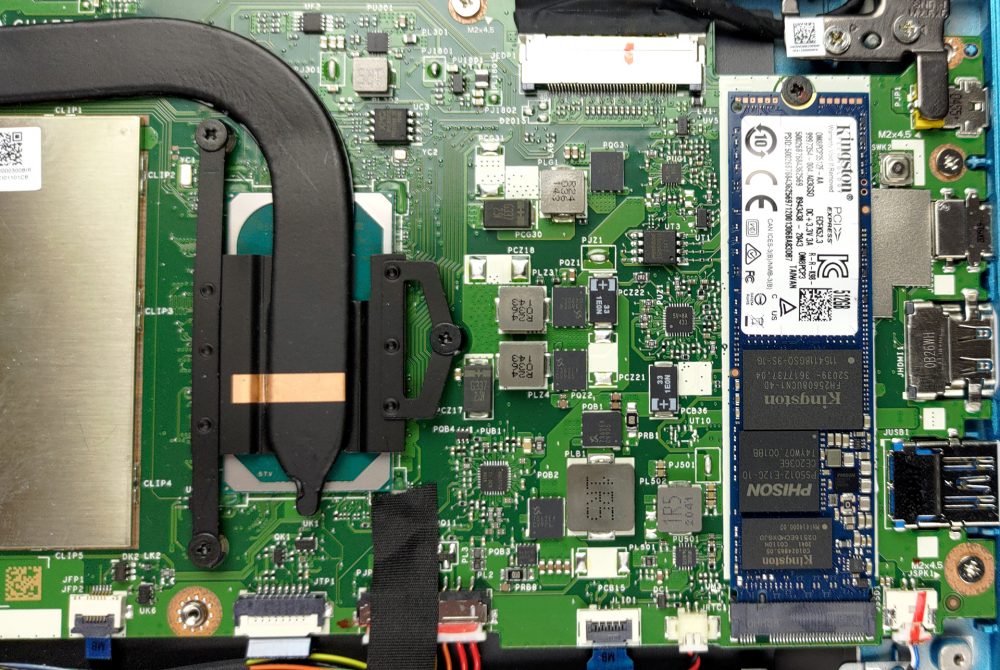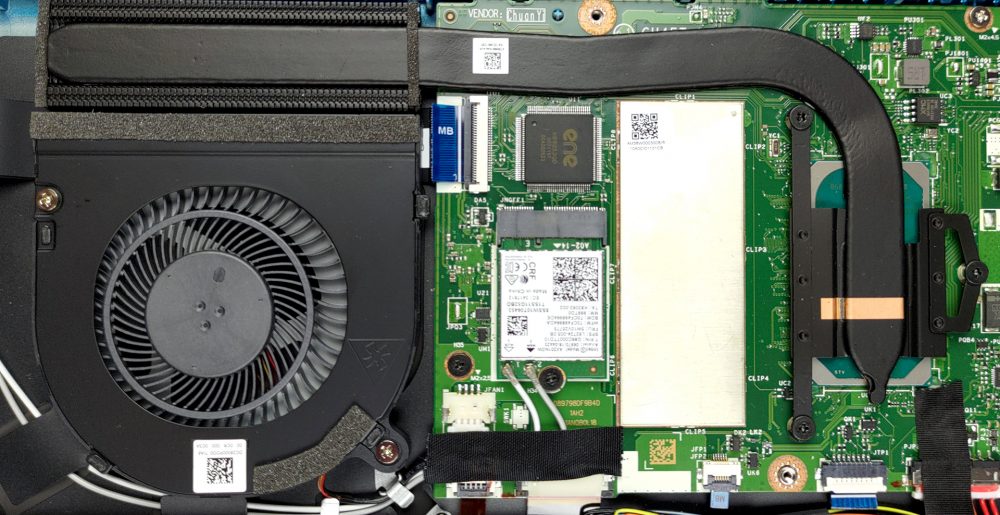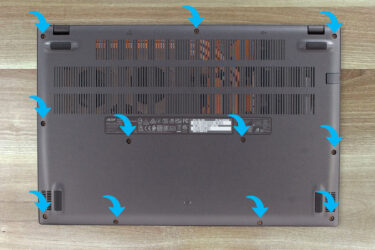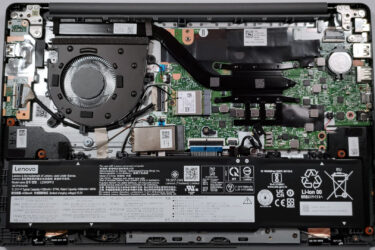Inside Acer Swift 3 (SF314-59) – disassembly and upgrade options
Getting inside of this device is easy. However, you won’t be really happy with what you find there.
Check out all Acer Swift 3 (SF314-59) prices and configurations in our Specs System or read more in our In-Depth review.
1. Remove the bottom plate
This laptop’s bottom panel is held in place by 10 Phillips-head screws. After you undo them, you need to pop the panel with a plastic pry tool.
2. Battery
The battery here has a capacity of about 50Wh.
3. Мemory and storage
Sadly, all of the memory is soldered to the motherboard. On the other hand, you can choose between 8 and 16GB of dual-channel RAM. Storage-wise, you get one M.2 PCIe x4 Gen 3 slot.
4. Cooling system
Last but not least, there is the cooling solution. It employs a single heat pipe, a heat sink, and a medium-sized fan.
Check out all Acer Swift 3 (SF314-59) prices and configurations in our Specs System or read more in our In-Depth review.
Acer Swift 3 (SF314-59) in-depth review
After we've reviewed the 16-inch version of the Acer Swift 3, today, we are going back to the roots, as we're testing the 14-inch SF314-59. It has a familiar design that is now dressed in more vibrant colors.As with the larger model, the 13-inch device stays true to Intel, but instead of the 35W CPUs, they get the 15W Tiger Lake processors. You can max out the laptop with a Core i7-1165G7, and even though there is no dedicated graphics option, we all know how good of a job does the Iris Xe Graphics do.Additionally, this year, the only display option is a 1080p IPS panel, which has bee[...]
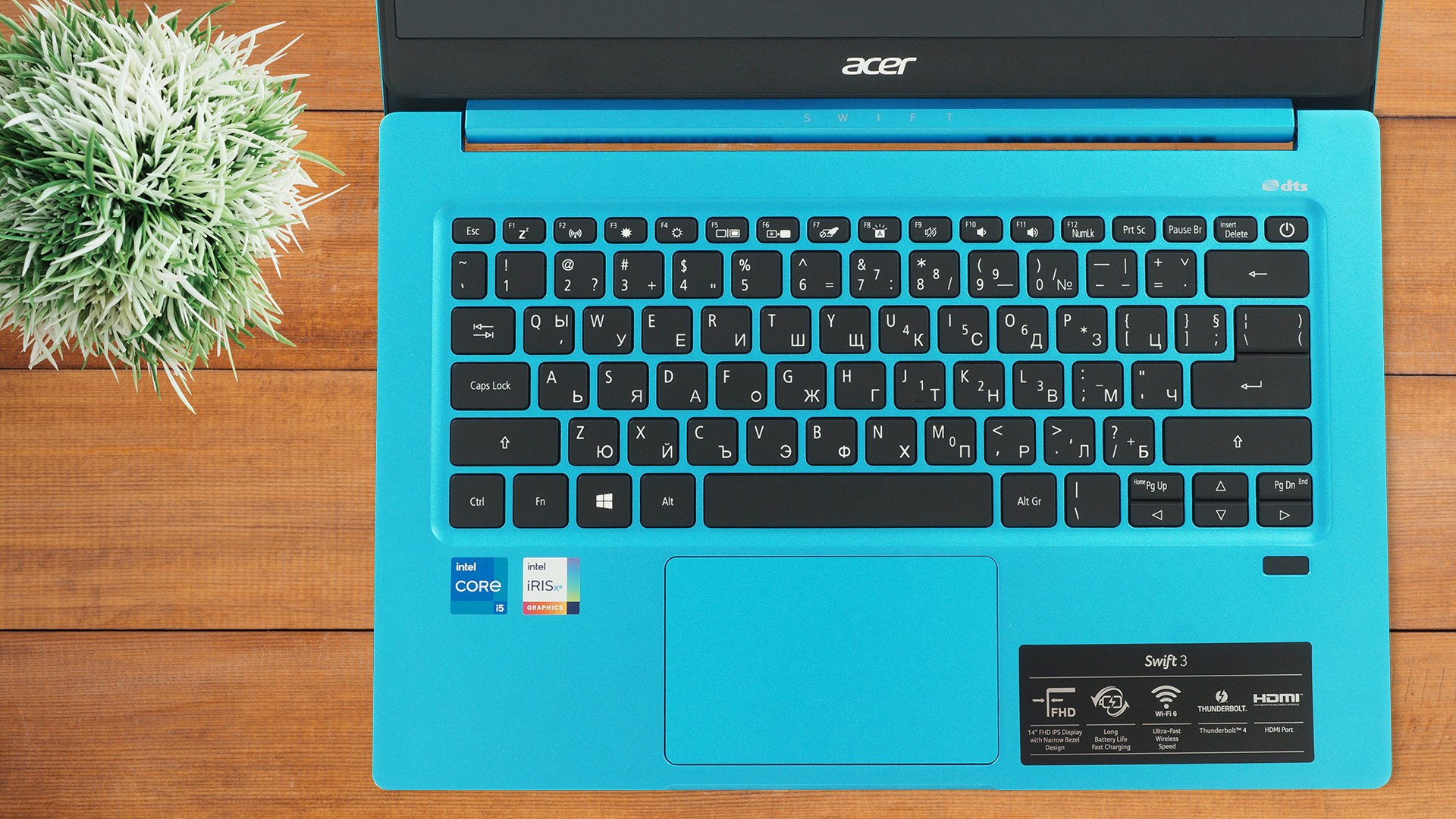
Pros
- Adequate price
- Fingerprint reader
- Comfortable backlit keyboard
- Thunderbolt 4 connection and an M.2 slot for storage upgrades
- Good battery life
- Its Full HD IPS panel has comfortable viewing angles and a good contrast ratio (Chi Mei N140HCA-EAC (CNM14D4))
- No aggressive PWM for brightness adjustment (Chi Mei N140HCA-EAC (CNM14D4))
- Excellent performance
Cons
- Memory is soldered to the motherboard
- Covers only 54% of sRGB (Chi Mei N140HCA-EAC (CNM14D4))
- Slow USB Type-A 2.0 port
